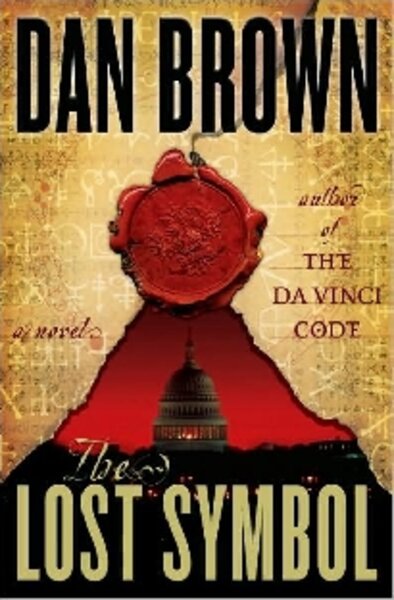The Lost Symbol
Loading...
Legend has it that Dan Brown – product of a gold-plate education at both Phillips Exeter Academy and Amherst College – never read a popular novel until he was an adult. Then, while vacationing with his wife in Tahiti in 1993, he is said to have breezed through Sidney Sheldon’s “The Doomsday Conspiracy” and decided that he could do better.
No kidding. Today, with the publication of “The Da Vinci Code” in 2003 (to date, 81 million copies sold in 44 different languages), Brown has become one of the most widely read authors in the world. His latest novel, The Lost Symbol – with its expertly paced blend of real locales, off-beat facts, and fast-moving fiction – will do nothing to damage his reputation.
In “The Lost Symbol,” Harvard University symbologist Robert Langdon (protagonist of both “The Da Vinci Code” and “Angels & Demons”) is back. He’s still wearing his Mickey Mouse wristwatch, still suffering from claustrophobia, and as breathtakingly learned about all things occult as ever.
At the book’s open, Langdon is seeking no adventures. (Apart from a couple of glancing references to his “scandalous” book about “the sacred feminine and the church” and some unwanted attention from “Grail fanatics” there are no indications that international stardom has gone to Langdon’s head.) Instead he’s quietly brewing a cup of coffee at home in Cambridge one Sunday morning when he gets a call asking him, in the name of his dear friend and mentor, Peter Solomon, to fly immediately to Washington to fill in for a canceled guest speaker at an illustrious gathering. Many of the attendees at the meeting are expected to be Freemasons and they are gathering in a building rich with Masonic history. So it makes sense that Langdon will be addressing the group on the symbolism found in the architecture of the US capital.
Eager to be of service to Solomon, Langdon jumps on a private jet and speeds to Washington only to discover that his mentor, who is a high-level Mason, is in serious trouble, threatened by a deranged loner who hopes to learn the inner secrets of the Masonic world.
Pretty soon the CIA is involved as well (represented by a tiny, bristly, Japanese woman named Sato who is CIA director of security), although the reasons for the agency’s involvement don’t become clear till later in the novel.
What is apparent pretty quickly, however, is that both Solomon and his sister Catherine (who is “smart, rich, and thin” and deeply involved in the ultracryptic field of noetic sciences, concerned with matters like weighing the human soul) are both at risk of losing their lives. Because their stalker’s goal is the discovery of secret Masonic knowledge said to be hidden in various Washington landmarks, Langdon’s expertise as a symbologist becomes key to efforts to rescue them.
As is always the case in a novel involving Langdon, there is plenty of esoterica to intrigue readers. The symbolism of pyramids, the significance of a talisman, the workings of a magic square, the true meaning of “Apocalypse” are just a few of the picturesque alleys that Brown takes us down. There is also a fair bit of metaphysical musing on the true nature of wisdom, the untapped power of human potential, the correct interpretation of the Bible, and the struggle to uncover truth.
If the book begins to seem too fantastic in places, it is well to remember Brown’s note to readers at the outset: all the organizations, rituals, science, artwork, and monuments in the novel are real. Brown didn’t need to invent any of the core elements of his story – all he dreamed up was a fictional web within which to bind them together.
No one has ever pretended that Brown is a gifted literary stylist, and those who find him lacking in that area will not have their minds changed by “The Lost Symbol.” There is no respite here from the cliches of the genre. The devices you expect are all on display: the breathless tone, the italicized sentences, the phrases like, “Bare-chested, Mal’akh stared into the darkness...” (And there will undoubtedly be readers for whom the villain known as Mal’akh – a massive, tattooed eunuch who at times is seen draped in a silken loincloth and clutching a ritualistic dagger – is simply too much.)
But for readers who stay with it (and I can’t think there are really too many who are going to put this book down halfway through), it all comes together quite neatly in the end.
Brown is good at what he does – very good, in fact. It may be that eventually readers will tire of the tweedy Langdon and his semiotic-driven adventures. But my guess is that we’re not anywhere near there yet.
Marjorie Kehe is the Monitor’s book editor.






